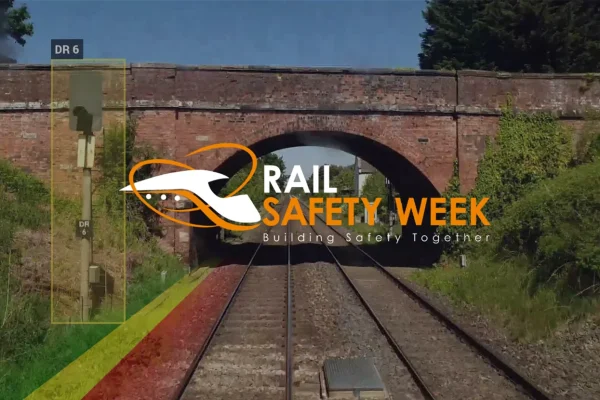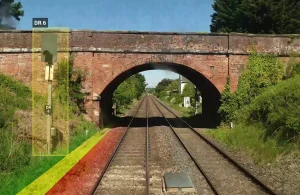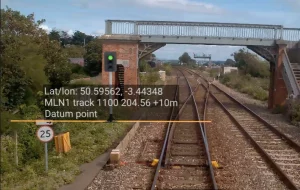16/06/2025
Rail Safety Week Day 1: Supporting Safer Signal Sighting

Why Signal Sighting is Critical for Safety
Signal sighting is a critical part of railway safety, ensuring that train drivers have clear and unobstructed views of signals in every condition, and at all times. A missed or misread signal can have serious safety consequences, making the accuracy and reliability of signal sighting absolutely essential for preventing incidents and keeping the network running smoothly.
Signal sighting involves careful consideration of signal placement, thorough analysis of visibility across varying conditions, and confirmation that drivers can correctly interpret signals – even at high speeds or in challenging weather and lighting.
Traditionally, signal sighting has required teams to spend significant time trackside, physically assessing each signal’s visibility and placement. This process is not only time-consuming but also exposes staff to the inherent risks of working near the tracks.
How AIVR Makes Signal Sighting Safer
AIVR (Automated Intelligent Video Review) is widely used across the rail industry for signal sighting, by companies such as Network Rail, Siemens, and VolkerRail. Signal Sighters utilise the forward facing video on the AIVR Platform, alongside the suite of digital tools, to remotely ensure signals meet safety stands, check for safe site access, make estimates for signal placements, and familiarise teams with their project environment from the safety of a remote location.

With AIVR, Teams can:
- Quickly Search by Signal: Instantly locate and review specific signals using asset IDS.
- Assess Signal Visibility & Compliance: Assess sightlines, distances, and clearances with different measurement tools and overlays.
- Estimate Signal Placements: Use virtual signals, sighting tools, and measurement features to assess optimal signal locations and ensure clear visibility.
- Highlight Areas of Interest: Annotate footage to highlight obstructions, visibility issues, or hazards.
- Track Changes Over Time: Monitor signal visibility and site conditions across seasons and over time to support proactive planning and maintenance.
- Share Insights With Teams: Export annotated images, videos, and reports to communicate safety-critical findings across teams and stakeholders.

Augmented Reality Capability on the AIVR Platform allows users to input 3D signal models directly into the recorded imagery.
Safety Benefits of Remote Signal Inspection
- Minimises exposure to tracks by reducing the need for physical site visits – keeping staff safer, providing cost and time savings and reducing carbon emissions from the travel to site.
- Enables early identification and resolution on hazards, e.g. vegetation starting to obstruct a signal, preventing incidents before they occur and supporting proactive maintenance.
- Supports regular, comprehensive reviews, reducing the risk of signal failures and operational accidents, protecting passengers and train operators, through maintaining visibility on the health of the infrastructure.
“AIVR has helped me with signal sighting activities on a number of schemes, where alternative footage was not readily available.” Engineer, Volker Rail.
“AIVR allows the site of work to be reviewed without the need to access track, saving time and costs as well as increasing safety by not being on or near the line.” Senior Project Engineer, Siemens
With these capabilities, AIVR is transforming how signal sighting is performed, making it not only more efficient but significantly safer for everyone involved. The ability to review signals remotely, monitor changes over time, and collaborate on findings means that potential issues are caught early, and the entire network benefits from more frequent and thorough checks.
Want to learn more or see AIVR in action? Get in touch!